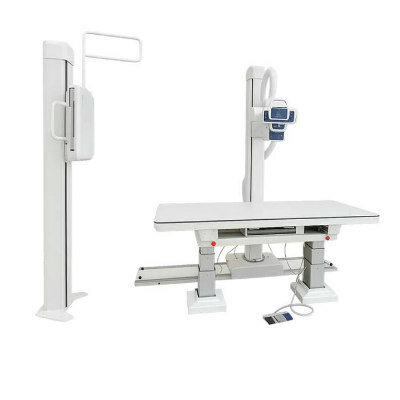Digital Mammography Improves Population-Based Breast Cancer Diagnosis
By MedImaging International staff writers
Posted on 15 Oct 2012
Substituting screen film mammography (SFM) with digital mammography (DM) in large, population-based breast cancer screening programs improves the detection rate of life-threatening cancer without substantially increasing detection of clinically insignificant disease. Posted on 15 Oct 2012
The study’s findings were published online October 2012 in the journal Radiology. DM’s higher sensitivity at identifying breast cancer raised apprehensions that its induction into screening programs would increase the diagnosis of clinically insignificant tumors--tumors that, if left undetected and thus untreated, would never have surfaced clinically in the individual’s lifetime. Data analysis demonstrated an increased incidence of ductal carcinoma in situ (DCIS), a precursor for invasive breast cancer, in the years after the introduction of population-based screening with DM. The development of low-grade DCIS can extend over more than 30 years; however, high-grade DCIS is associated with much faster cancer invasion.
“More DCIS and invasive cancers are detected with the use of DM in breast cancer screening compared to SFM,” said Adriana M.J. Bluekens, MD, from the National Expert and Training Centre for Breast Cancer Screening (Nijmegen, the Netherlands) and St. Elisabeth Hospital (Tilburg, the Netherlands). “In the mix of low- to high-grade DCIS lesions, there is no shift to the detection of low-grade lesions in digital screening. Instead of this, we noticed a larger amount of high-grade lesions, which are regarded as precursors of high-grade invasive tumors.”
To understand more about the impact of DM on screening programs, the Dutch researchers compared it with SFM in screening mammograms performed between 2003 and 2007. Recall was seen in 18,896 cases out of almost two million mammograms evaluated and 6,410 women were diagnosed with breast cancer. As expected, DM had a higher initial sensitivity for detecting cancer, with a detection rate per thousand of 6.8, compared with 5.6 for SFM.
Detection of high-grade DCIS with DM was 58.5%, compared with 50.5% for SFM. “This gain is largely due to enhanced depiction of microcalcifications with DM resulting in improved detection of DCIS and invasive carcinoma with an intraductal component,” Dr. Bluekens said.
The initial recall rate was higher with DM: 4.4%, compared with 2.6% for SFM. However, the transition to digital mammography did not result in a disproportionate increase in low-grade DCIS lesions, which are linked to potential overdiagnosis.
The findings provide additional proof of the advantages of population-based breast cancer screening programs that utilize DM, according to Dr. Bluekens. “The follow-up period of the different digital screening programs is not sufficiently long enough to analyze mortality effect separately from that of SFM,” she noted. “However, surrogate parameters, such as stage distribution and tumor characteristics of DM-detected cancers, do indicate the continuation of mortality decrease with the transformation of SFM to DM in screening programs.”
Researchers cautioned that the findings were based on analysis of data from the Dutch screening program, with its focus on balancing the rates of detection, recall, and false-positives. Statistics from the US screening program, which focuses more on a high detection rate, would likely be different.
Related Links:
St. Elisabeth Hospital














